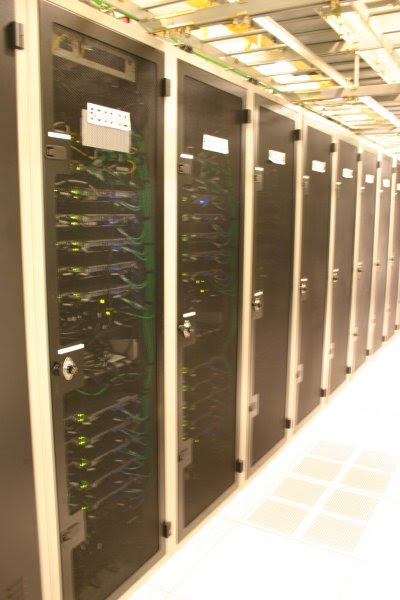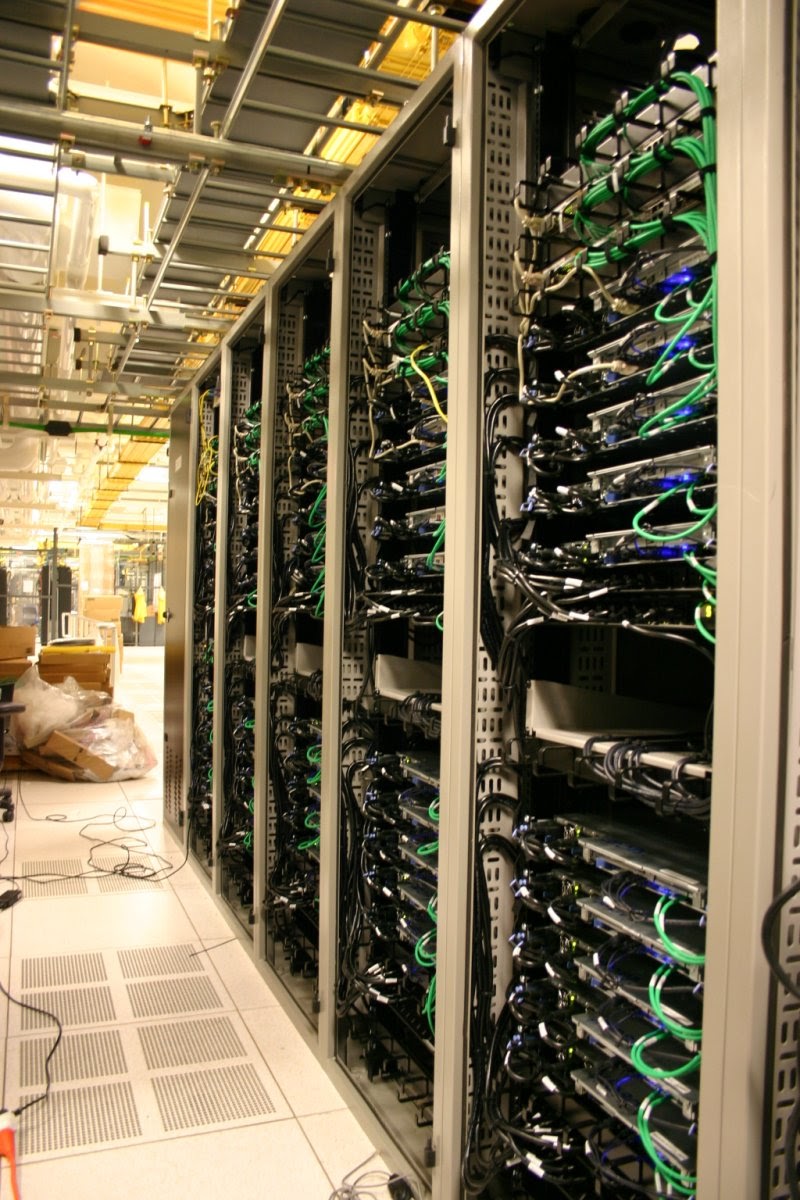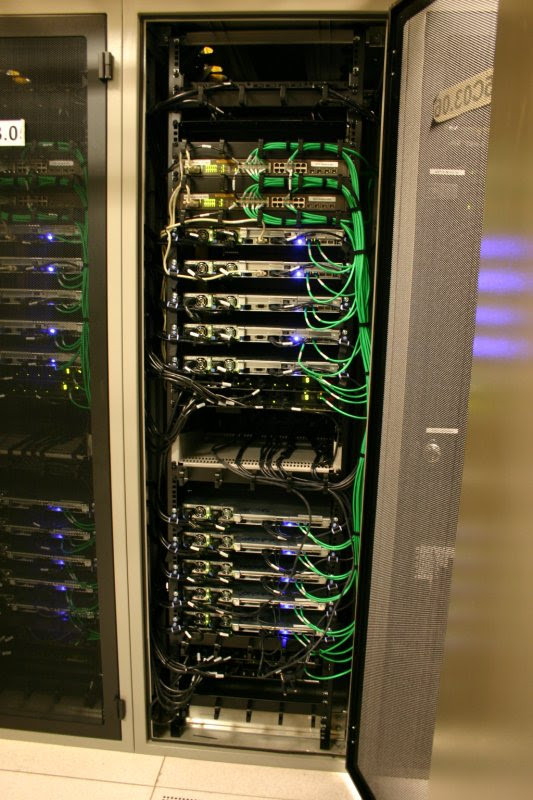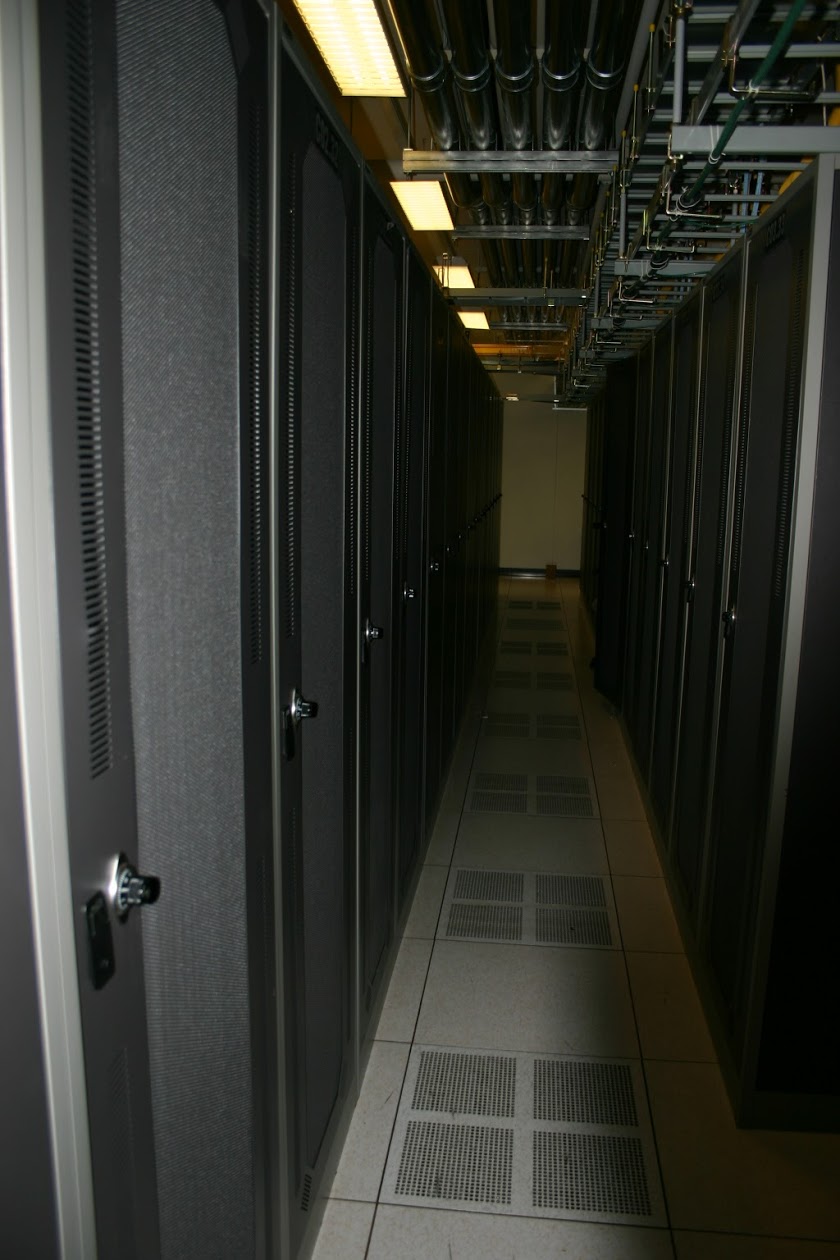The last time I worked inside a data centre co-lo was in2009. From East Coast US to West, from the UK to Europe, and here in Australia I spent many long hours in these windowless hubs of electronic existence.

Vibrant Media colo racks in Level 3, 111 8th Avenue Level 3 data centre. 
Level 3 data centre UPS units, New Jersey 
Vibrant Media cabinets, San Jose, California. 
Looking inside a Fotango Dell cabinet, 111 8th Avenue, Manhattan, NY. 
The IBM AIX hosts and SAN as used by Fotango at Colt Wapping data centre, circa 2003. 
Data centre corridor, Level 3 China Basin, San Francisco, late 2000’s
It’s been 10 years.
I started making a data centre at my fathers manufacturing organisation in the early 1990s. As a small business it had a number of computer systems, a small 100 MBit/sec LAN, and a room with air-conditioning that we sealed off and deployed physical dedicated servers and UPS units. I recall naming every host on the network with a name starting with the letter P:
- Parrot
- Pigeon
- Pardaloot
- Pootoo
- Peacock
- Pacific Black Duck
You get the idea. The company was called Pelican.
By the time I attended The University of Western Australia I was of course gravitating to the University Computer Club, a student association I would end up being Vice President and then President of. During my time there with friends, we furnished a small data centre our of recycled materials in order to contain the cooling for our server farm within the expanse of the vast Cameron Hall building; this structure still stands today (webcams).
In 1997 my interest in networking and digital rights led to help found The Western Australian Internet Association, now known as Internet.asn.au. Thus not being a network.
Despite not creating or working at an ISP in these earlier years of Internet, I was reasonably proficient in the IT physical infrastructure deployment. My professional career saw me spend 20 years within the data centres of banks, education, government, financial services. I used to order millions of dollars of server blade enclosures, remote control power distribution units and dual-power transfer units for reliability, switches, load balancers, remote KVM units; and upon notification of delivery at a data centre in Manhattan (111 8th Avenue, or 6th Ave), Seattle, China Basin in San Francisco, Andover MA, Amsterdam or more, I would organise for myself or my team to parachute in, un-box, unwrap, stack, and then crimp Ethernet leads, power on, and deploy clusters of servers, then kick off initial install server deployment, retreating home to then finish the software install remotely, and bring servers online and into service.
It was all about dependencies; have the right equipment in the right place at the right time to minimise the time spent in the co-lo.
The last one that I worked in was 2009. The last one that I visited was in 2013 – and that was one of the massive halls within the sprawling Amazon Web Services (AWS) US-East-1 complex; a facility that few people ever get to see (no photos).
All that effort, the logistics and physical work of installing equipment, is now largely redundant. I create virtual data centres on cloud providers from templates with more fault tolerance, scalability, and privacy in literally 5 minutes, across the planet without having to spend my time hidden for days (to weeks) crimping Ethernet cables, balancing redundant power usage, and architecting spanning tree powered reliable layer 2 networks.
While some write of the death of the data centre, I think the data centre has changed who its direct customers are. I’m not interested in touring facilities and planning cabinet layouts. I have better things to do. The hyper-scale cloud providers have automated and abstracted so much, that it is not cost effective for me to do any of that manual work any more.
Vivre la Data Centre. You don’t need to market to me any more. Just to those Cloud providers; cut your costs, you’re a commodity, and have been for a decade.
